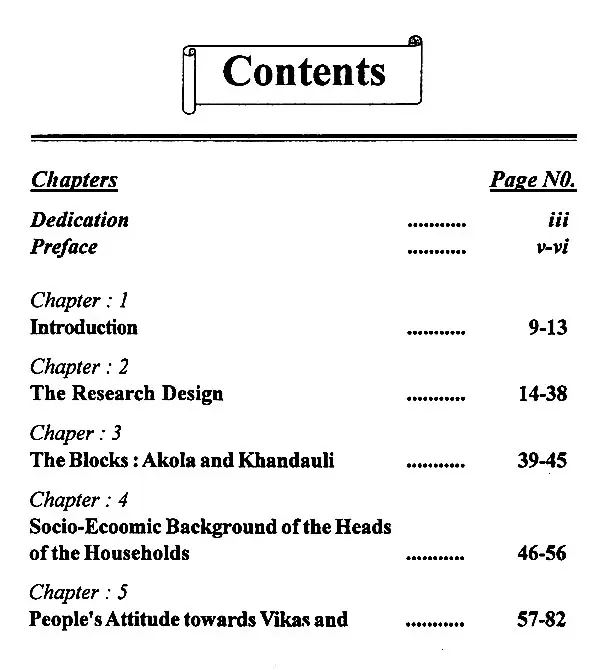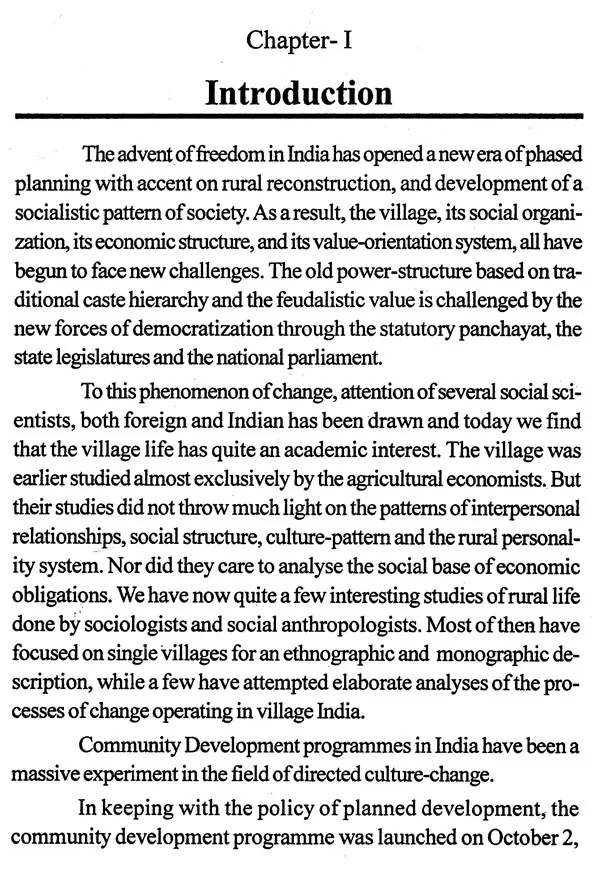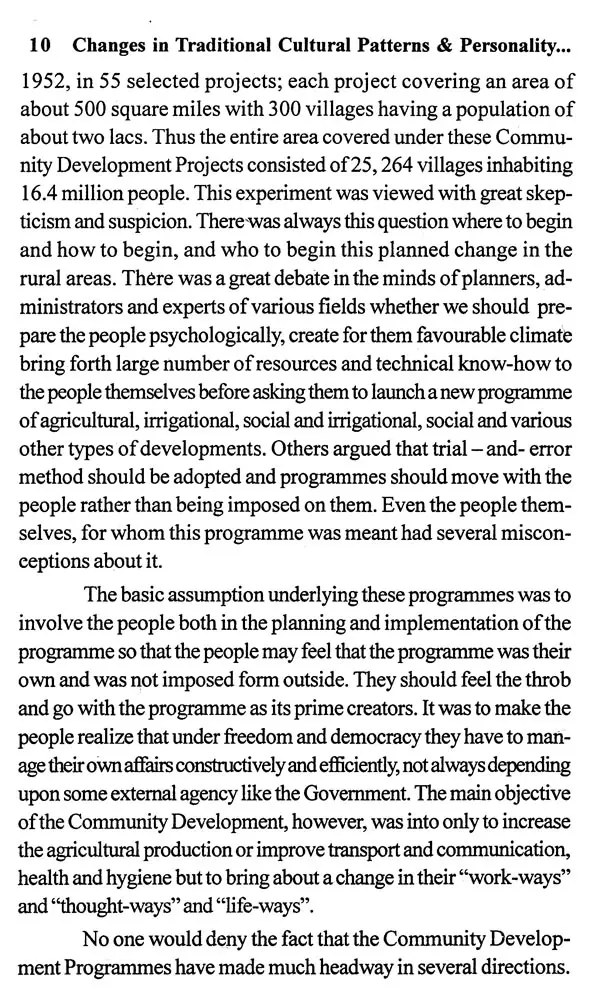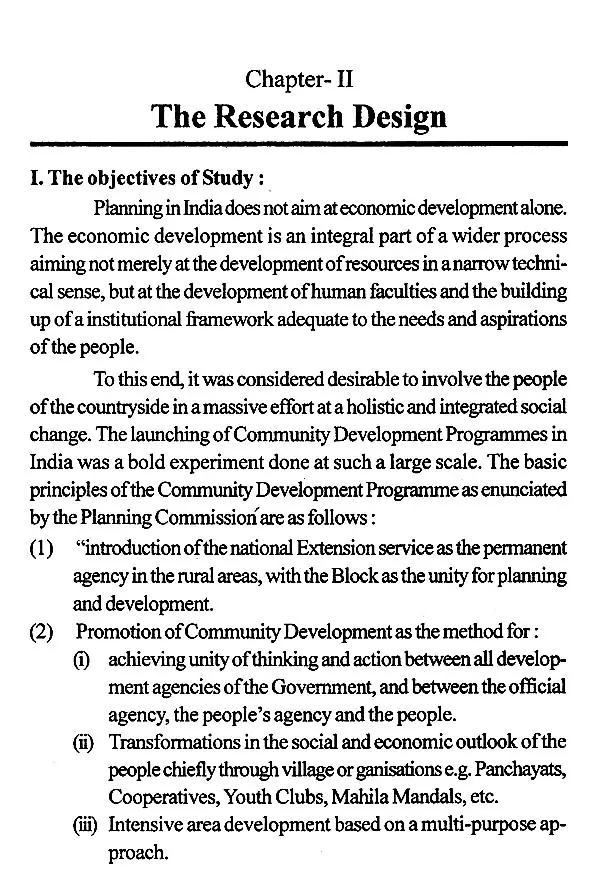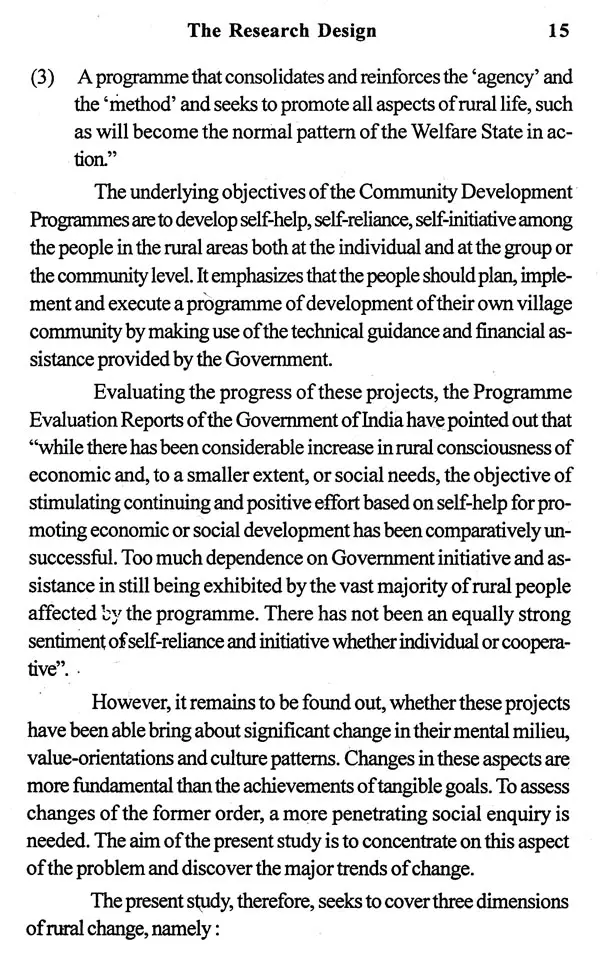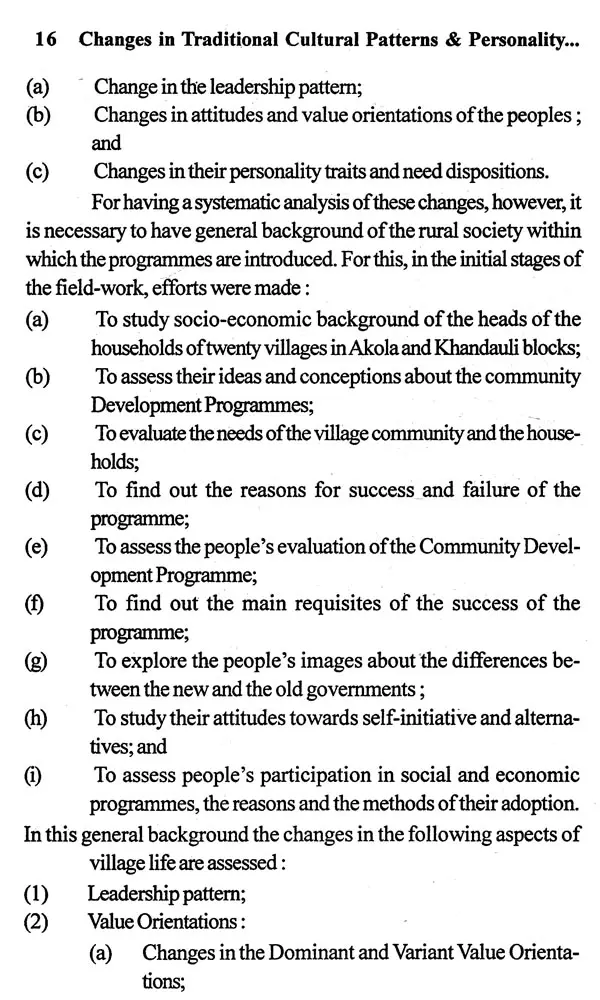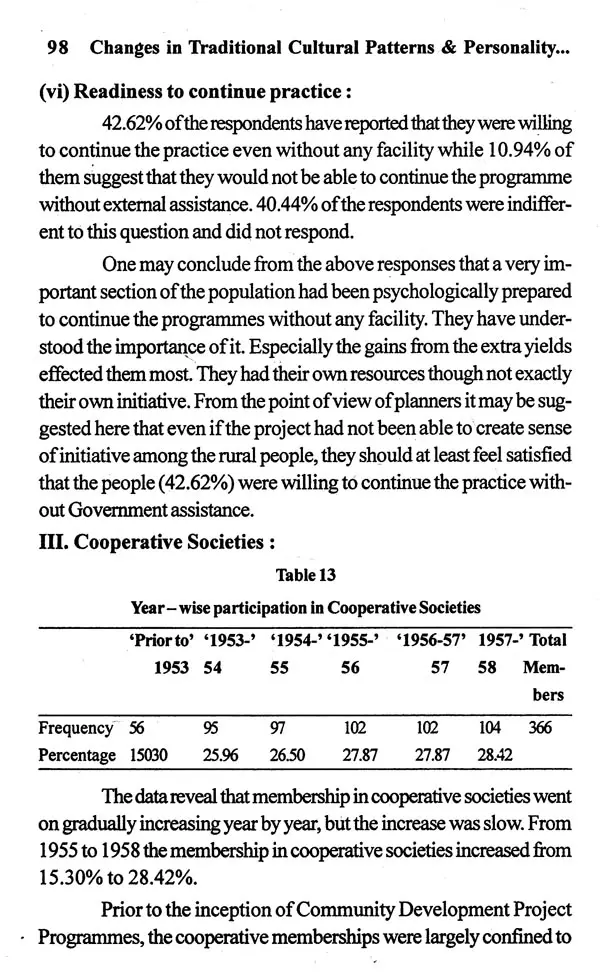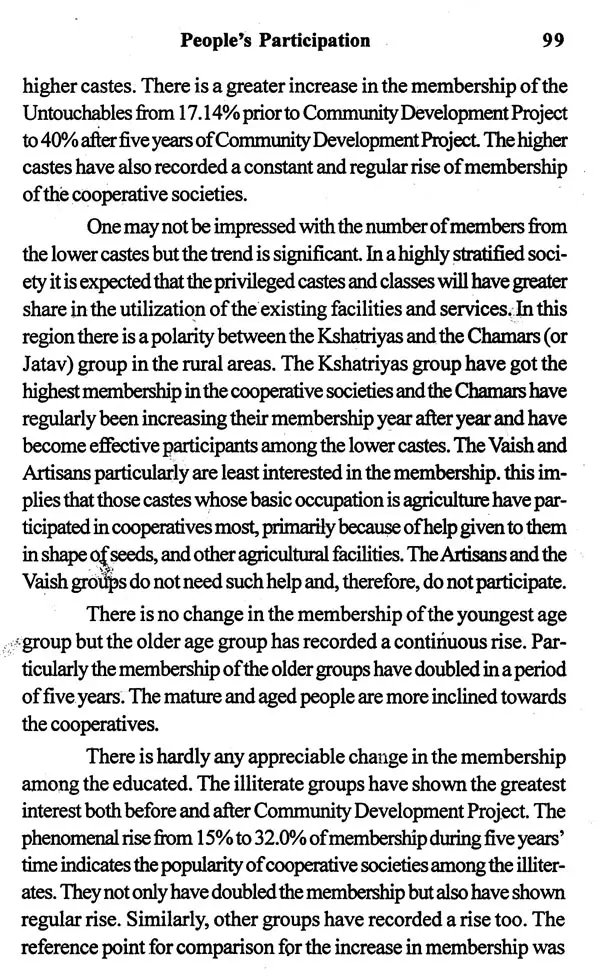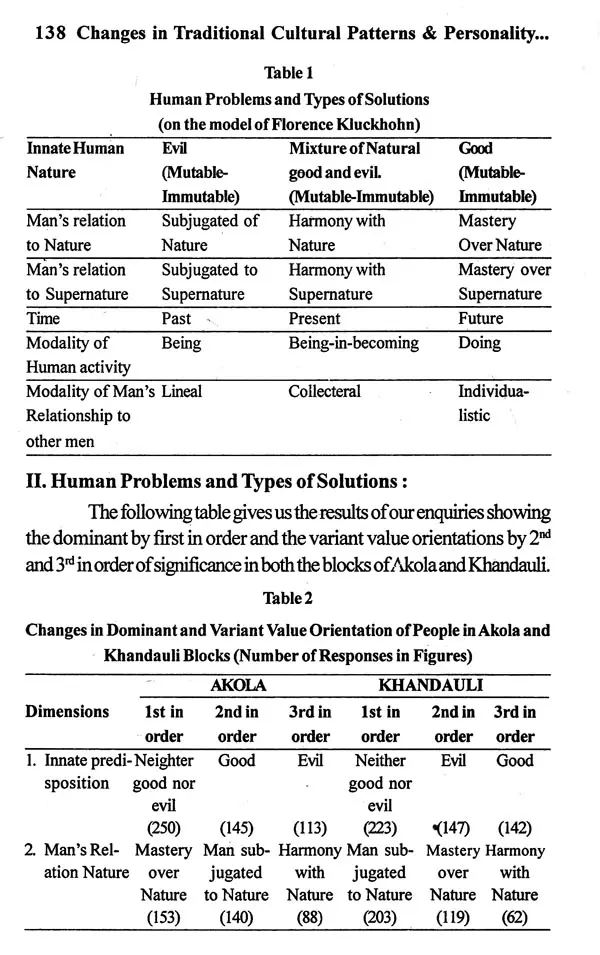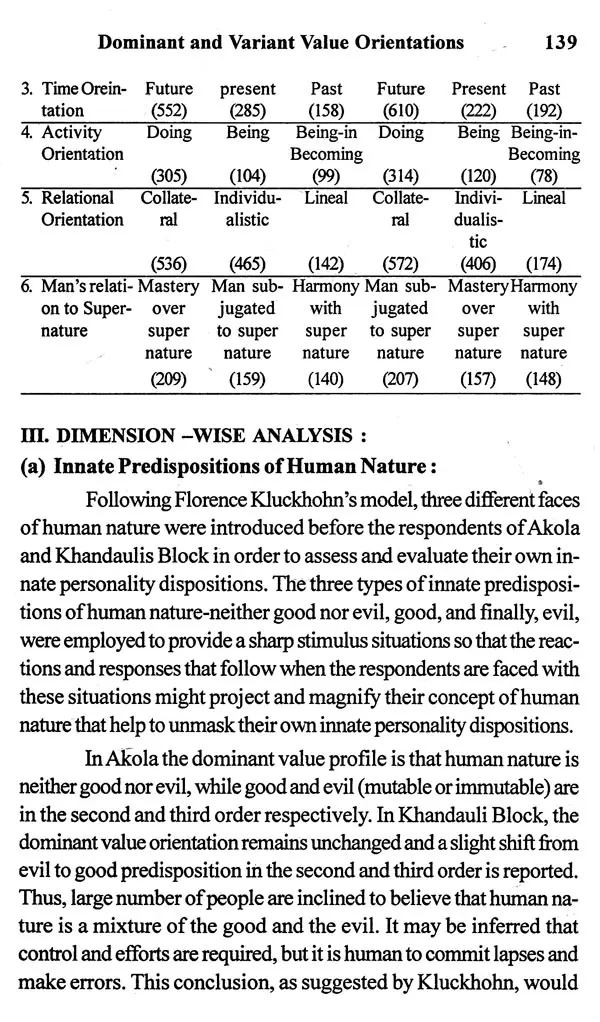
Changes in Traditional Cultural Patterns & Personality Traits Rural People
Book Specification
| Item Code: | UAD706 |
| Author: | S. K. Srivastava |
| Publisher: | KALA PRAKASHAN |
| Language: | English |
| Edition: | 2010 |
| ISBN: | 9789380467467 |
| Pages: | 192 |
| Cover: | HARDCOVER |
| Other Details | 9.00 X 6.00 inch |
| Weight | 340 gm |
Book Description
The present book deals with various facets of unique cultural dimensions associated with Varanasi. The important findings derived from the recently excavated archaeological sites in and around Varanasi region has also been made to give an in-depth cultural sequence through the ages. Discussion on the historical political scenario has been given for the clear understanding of different historical periods in the region. Temples of various deities, are being examined in their architectural and iconographical contexts. The contemporary rituals and traditions are also examined to show the vibrant continuity of ancient culture of Varanasi.
Dr. Onkar Nath Singh is working as an associate Professor in the Department of Ancient Indian History, Culture & Archaeology in Banaras Hindu University. He specializes in fields of Numismatics and Historiography. Author of books such as 'Guptottar Kalin Uttarbharatiya Mudrayein', about two and half dozen research papers produced by him have been published in various National and International Journals. He has been the Joint Secretary of the prestigious Numismatic Society of India from 2002-05 as well as the member of the editorial board of JNSI- and chief editor of Humanities India and presently holds the post of Treasurer of NSI and chairman of "Indian conclave of Humanities and Social Sciences". Besides being the member of various academic and administrative committees of the university and other institutions, he is also discharging the responsibility of Deputy Chief Proctor of Banaras Hindu University.
It gives me immense pleasure to write the foreword of this book titled "Cultural Glory of Varanasi" written by Dr. O.N. Singh, Associate Professor, Department of Ancient Indian History, Culture and Archaeology in Banaras Hindu University. This monograph should evoke an instant interest due to the content it adds to the existing knowledge of this ancient city.
Varanasi, known as the oldest living city, has got immense treasure of cultural heritage, which still requires great amount of study. Owing to its long history, the knowledge about the city, as propounded by historical studies and as available in spiritual and religious texts, has become an exquisite blend of myth and reality. The present study provides a comprehensive account of the socio-cultural and religious aspects of the ancient city, based on the study of archaeological sites, the temples the sculpture and the architecture apart from the knowledge available. This way, the present book, I am sure, will prove to be valuable for the students and researchers interested in study of Varanasi. The book covers almost all topics of interest starting from geographical background to the archaeological context and the socio-political framework of the city. The section specifically dedicated to the ‘Ramlila of Ramnagar' highlights the way in which Varanasi has been able to upkeep its traditions and cultural ethos withstanding the waves of commercialization.
Dr. O.N. Singh, with his vast experience and deep interest in Archaeology and Numismatics, has been able to do justice with the work. I am sure that the complete gamut of readers, ranging from students to the researchers, will be adequately benefited by the book.
This book, which presents the whole splendid cultural history of Varanasi from Vedic times to the close of the British Era. Varanasi is one of the oldest living cities in the world, revered as the abode of Lord Vishwanath, the eternal city of the ageless god. Kashi and Varanasi are synonymous terms and both are used for the city of that name as well as for the `Ksetra' or 'Janapada' or district. The entire study has been divided into eight chapters.
The first chapter ‘Introduction' is aimed at outlining the Key features of the holy city, situated on the western bank of sacred river Gangs. Varanasi is famous as a cultural religious city kali over India his known by many names which threw light on its nature liked Pushpawati (city of flowers), Molini (city of Lotus ponds). Surandhan (protected city), Sudershan (beautiful city) Joyansheela and Jitwari (city of incarative business),Kashi (city of light)Brahmvardhan (city of cosmic knowledge).
In the past Varanasi city was the main centre of trade and commerce, joined by other cities through land and water routes has been described in detail in the second chapter 'Geographical Background and Transportation Routes'. The importance of Kashi in the past as well as in present times is due to its trade and geographical status.
It is still not known when this city came into being but according to scriptures during the Vedic Period, Rena son of Sage Vishwamitra established Aryan settlement here. There is a story that Ved-Vyas tried to build new Kashi but did not succeed. Historically the twenty-third Tirthankar of Jains, Parshwanath was born in Varanasi in the eight century B.C. It is also said that Gautam Buddha who gave his first sermon at Rishipattan (Samath) and initiated `Dharma Chakra Pravartan’. The third and fourth chapters are devoted to the study of Varanasi in its political and archaeological context.
Varanasi is a mythological city famous for its temples and ghats which attracts foreign visitors and Indian pilgrims. To anyone it is an experience not only a sightseeing tour through visiting important places can be called a tourist paradise, discussed in the following fifth, sixth, seventh and eighth chapter. People of all sects resides here gives the message of Unity in Diversity has held foremost place in true history of India An account of a city of such remarkable associations which has occupied such a prominent place in the annals of the human race, is not without its importance and ought not to be devoid of interest. Having resided in it for several years, I have enjoyed peculiarly favourable opportunities for becoming acquainted with its inner life and character. The task I have set myself is not that at discussing the religious systems existing there, but of giving a representation of Varanasi as was lathe past and as in the present and early condition connection with ancient Buddhism, architectural remains, famous temples, holy wells and tanks and numerous ghats leading down to the Ganges. Varanasi is destined to retain that position in the new era of enlightenment which has already downed upon the land.
I wish to acknowledge with deep gratitude those who have participated in this project in countless ways. I am beholden to Prof. Jaiprakash Singh, my teacher who discussed relevant issues and guided me a lot in this work lam thankful and humble to late Dr. H.D. Pathak, who inspired and persuaded me to do this work. I express my deep sense of gratitude to honorable Vice-Chancellor, Prof. C.D. Singh of Indira Gandhi National Tribal University, Amarkantak (M. P.) who helped me in marry ways.
The author feels honoured that Prof. D.P. Singh, the Vice-Chancellor of the Banaras Hindu University has very kindly written the foreword for this monograph and is specially beholden to me. I cannot fail to remember and express my warmest thanks to Prof. Mohammad Naseem, Department of A.I.H.C. Archaeology B.H.U. for his valuable assistance in the archaeological researches. I am indebted to him in ways more than one. I cannot forget to remember and express my deep sense of gratitude to Dr. Indrajeet Singh, who read the proof of the book and for taking personal interest.
I am thankful to Dr. Mahender Singh Yadav, Sushil Kumar Singh, Vinay Singh, Samvedana Singh and Sujeet Kumar Singh for their precious time and interest they took in the completion of the work.
Regarding photographs of the important temples which serves as the illustrations for this book, I am thankful to Dr. Priyanka Singh. Without her help it would not have been possible for me to bring out the book in the present form. I also acknowledge the blessing of my mother and deep gratitude to my wife Kiran Singh who on account of my being busy most of the time carry out the larger share of the burden of the day to day responsibilities single handed. She has always been a source of inspiration and a silent observer. The author is also grateful to his sons Vishwambhar Singh and Abhisliek Singh Bhriguvansi, who always pushed me to speed up my work.
At last but not the least, the author wishes to thank Dr. Prom Shankar Dwivedi of Kala Prakashan for bringing out this book so well so quickly.
